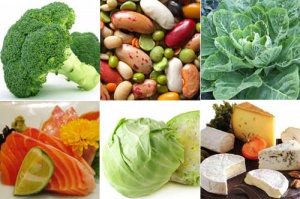Vitamin B5
Contents
Description
Vitamin B5, also known as pantothenic acid of pantothenate, is water-soluble and important nutrient for the synthesization and metabolization fats, carbohydrates and proteins. Small amounts of pantothenic acid are found in almost all foods with varying higher amounts found in certain foods such as legumes, whole grains and eggs. Pantothenic acid is also a common ingredients found in various skin and hair products.
Health Benefits
Also known as the “anti-stress vitamin,” pantothenic acid offers a wide variety of health benefits including but not limited to the treatment of hair loss, acne, allergies, ADHD, heart disease, asthma, celiac disease, premature aging, colds, shingles, skin disorders, mouth ulcers, chronic fatigue syndrome, and the prevention of mental and physical stress and anxiety. Pantothenic acid can also protect against vertigo and assist with the healing of wounds. Pantothenic acid can improve low blood pressure, insomnia, hypoglycemia, alcoholism, cramps during pregnancy, obesity, athletic performance, muscular dystrophy, neuralgia and multiple sclerosis.
Beauty Benefits
Extremely important in the balance and regulation of hormones as well as wound healing, vitamin B5 can help prevent and treat certain types of acne and skin infections and ailments. Pantothenic acid can prevent and treat hair loss as well as maintaining the color condition of hair as well as reducing pore size in the skin. Vitamin B5 acts as a conditioner for the skin and hair, moisturizing, rejuvenating and healing both.
Deficiency
Deficiency in pantothenic acid is extremely rare and unlikely and therefore has not been studied too thoroughly. In few cases in which deficiency has been shown, when pantothenic acid is returned to the patient’s diet, all symptoms may be reversed. Symptoms of deficiency include fatigue, irritability, numbness, muscle cramps and hypoglycemia among others.
Food Sources
- Broccoli
- Cabbage
- Legumes
- Salmon
- Collard Greens
- Milk
- Cheese
- Eggs
- Nuts
- Soybeans
Daily Recommended Doses
- Infants: 0-6 Months 1.7 Mg/ 7-12 Months 1.8 Mg
- Children: 1-3 Years 2 Mg/ 4-8 Years 3 Mg
- Males: 9-13 Years 4 Mg/ 14-18 Years 5 Mg/ 19-70 Years 5 Mg
- Females: 9-13 Years 4 Mg/ 14-18 Years 5 Mg/ 19-70 Years 5 Mg
- Pregnant Females: Less than 19 Years 6 Mg/ 19-50 Years 6 Mg
- Breast Feeding Females: Less than 19 Years 7 Mg/ 19-50 Years 7 Mg
